My Gum Graft is Turning White as It Heals, Reasons Week by Week
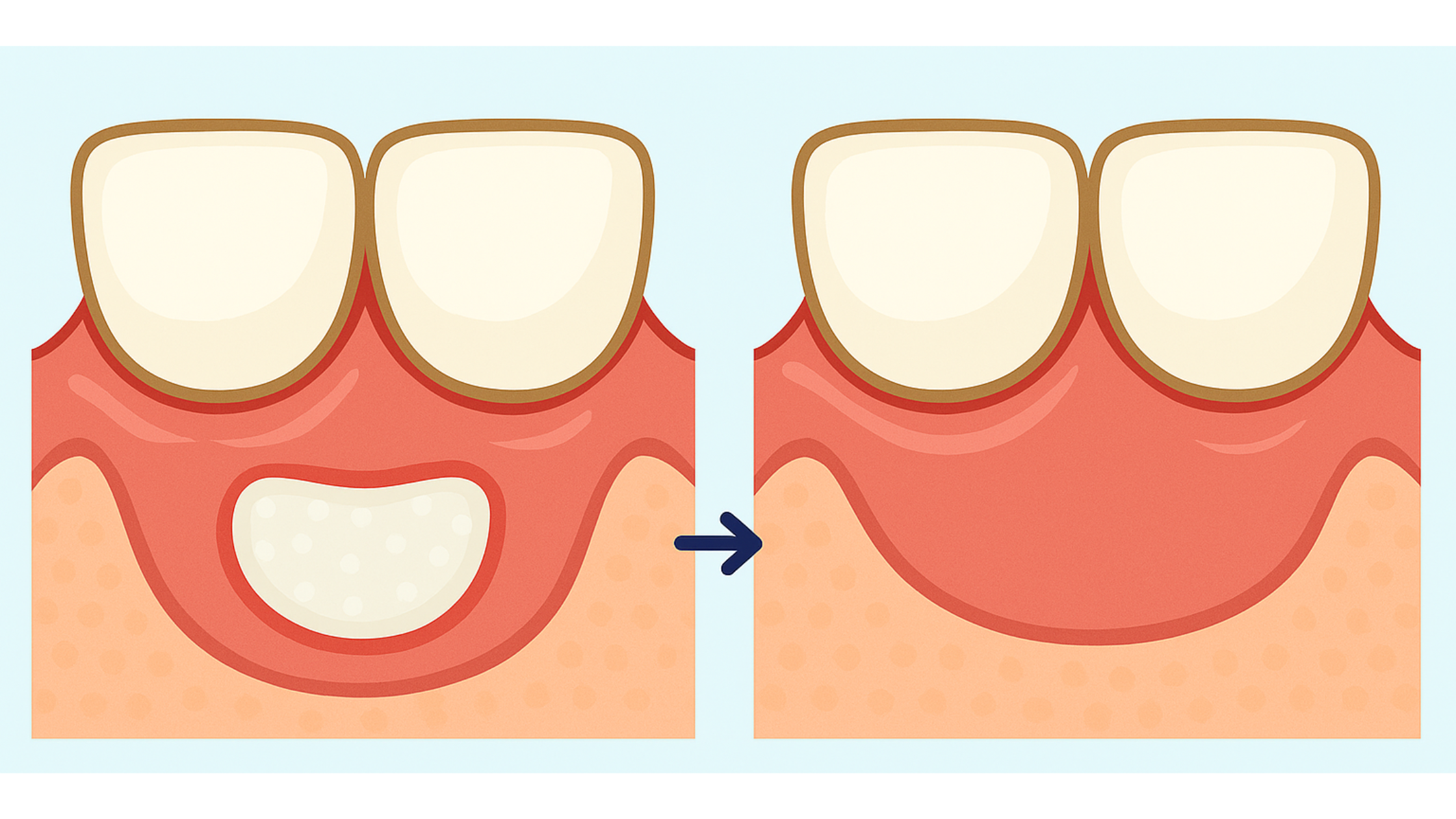
If you’ve recently had a gum graft, you might have noticed some color changes or a white appearance in the first few days.
Don't worry - this is completely normal! It's all part of the natural course of healing.
Just like your skin naturally sheds to renew itself, the gum graft also needs to slough off its outer dead layer to form a fresh, healthy one.
In the first week, it’s too soon to jump to conclusions. The best thing to do is to be patient and let the healing process take its natural course.
As your gums heal, they’ll gradually look and feel more normal in color, shape, and texture.
In this article:
1. Is a White Gum Graft a Sign of Failure?
2. A Gum Graft Turning White Can Actually be a Good Sign
3. How to Tell if a Gum Graft Turning White is Failing or Healing?
4. Gum Graft Turning White in the First Week: The Reasons
5. Gum Graft is White in the Third Week: Is This Normal?
6. Gum Graft Looking White After Healing
7. What Should a Mature Gum Graft Look Like?
8. Quick Overview of The Healing Stages
Is a White Gum Graft a Sign of Failure?
A gum graft turning white is completely expected and not necessarily a sign of failure, especially in the first week or so.This always happens with the technique that consists of taking the graft from the roof of your mouth (palate) and attaching it to your gums.
Why does it take on this white appearance? Because once the graft is removed from the palate, it is cut off from its blood supply, causing the outer skin to actually die.
In the first week, the dead skin turns white, then sheds. This makes room for a new layer of living tissue to form over the grafted site.
In the image below, you can see the graft turning white on the third day, which will later be replaced by newer skin.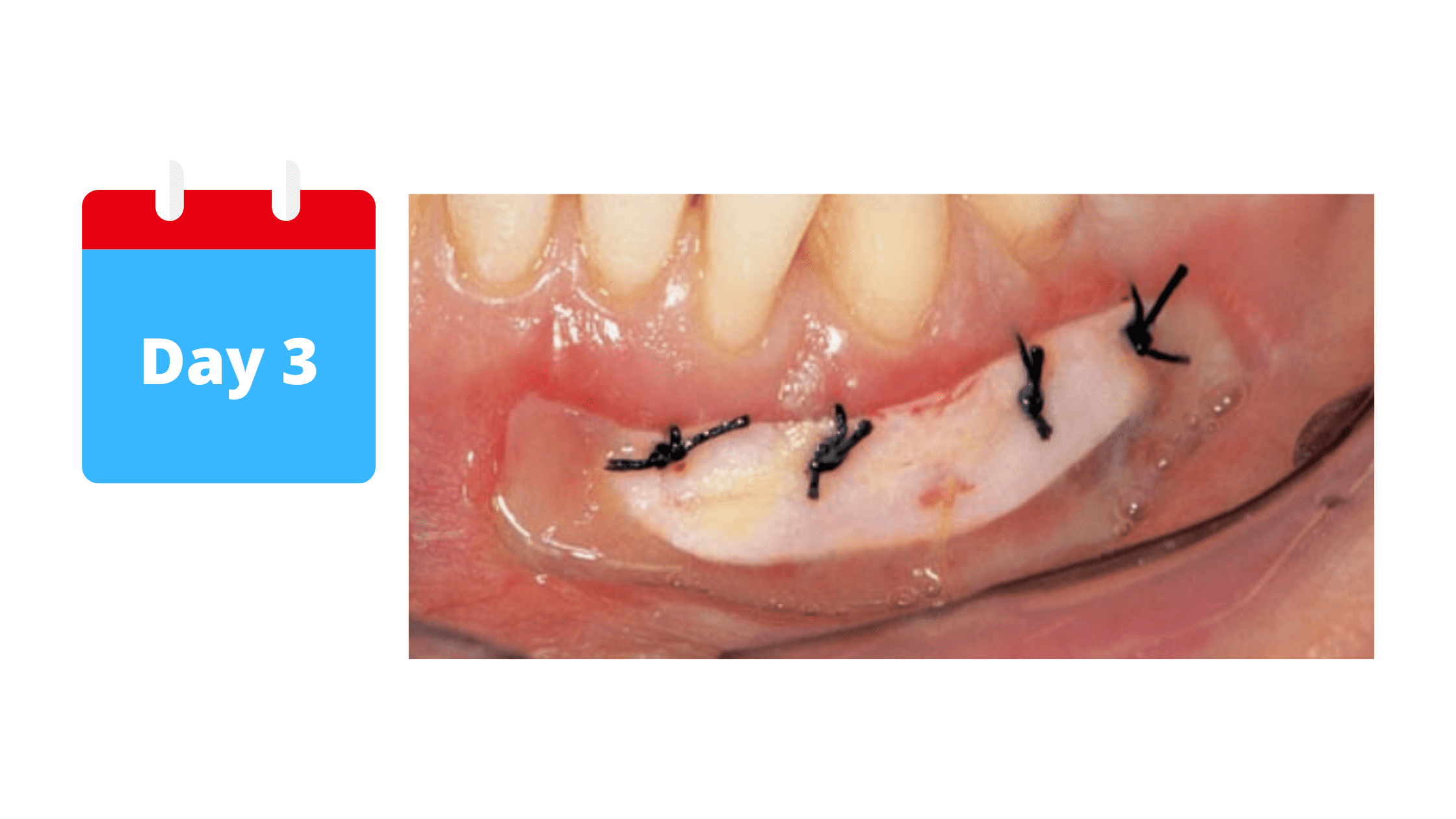
In the image below, you can see the graft turning white on the third day, which will later be replaced by newer skin.

Graft failure is a completely different situation. It means the entire graft has died and hasn’t survived. This can also cause the graft to turn white and start peeling off.
How to tell if a white graft is healing or failing?
In the first two weeks after the procedure, it’s too early to judge. During this period, it’s normal to see changes in the graft’s color, size, and texture. The final result isn’t noticeable until the graft has fully stabilized and integrated, which usually happens around the sixth week.
A Gum Graft Turning White Can Actually be a Good Sign
Your gums don’t return to normal right away. Healing takes time and happens in several stages.One early change you might notice is the outer layer of the graft turning white and slowly peeling off. This usually starts within the first few days.
Although this white color may look worrying, it can be a good sign that the graft is taking hold and renewing itself.
The most important part of the graft isn’t the white outer dead layer but the inner part called the connective tissue.
This inner layer is the foundation for healing because it’s the only living part of the graft. It contains blood vessels and living cells that help it survive in the early days.
As it attaches to the recipient site, it forms new blood vessels and replaces the old, dead tissue with a fresh layer that blends in better.
The redness around the graft by the third day is one of the signs that new blood vessels are forming.
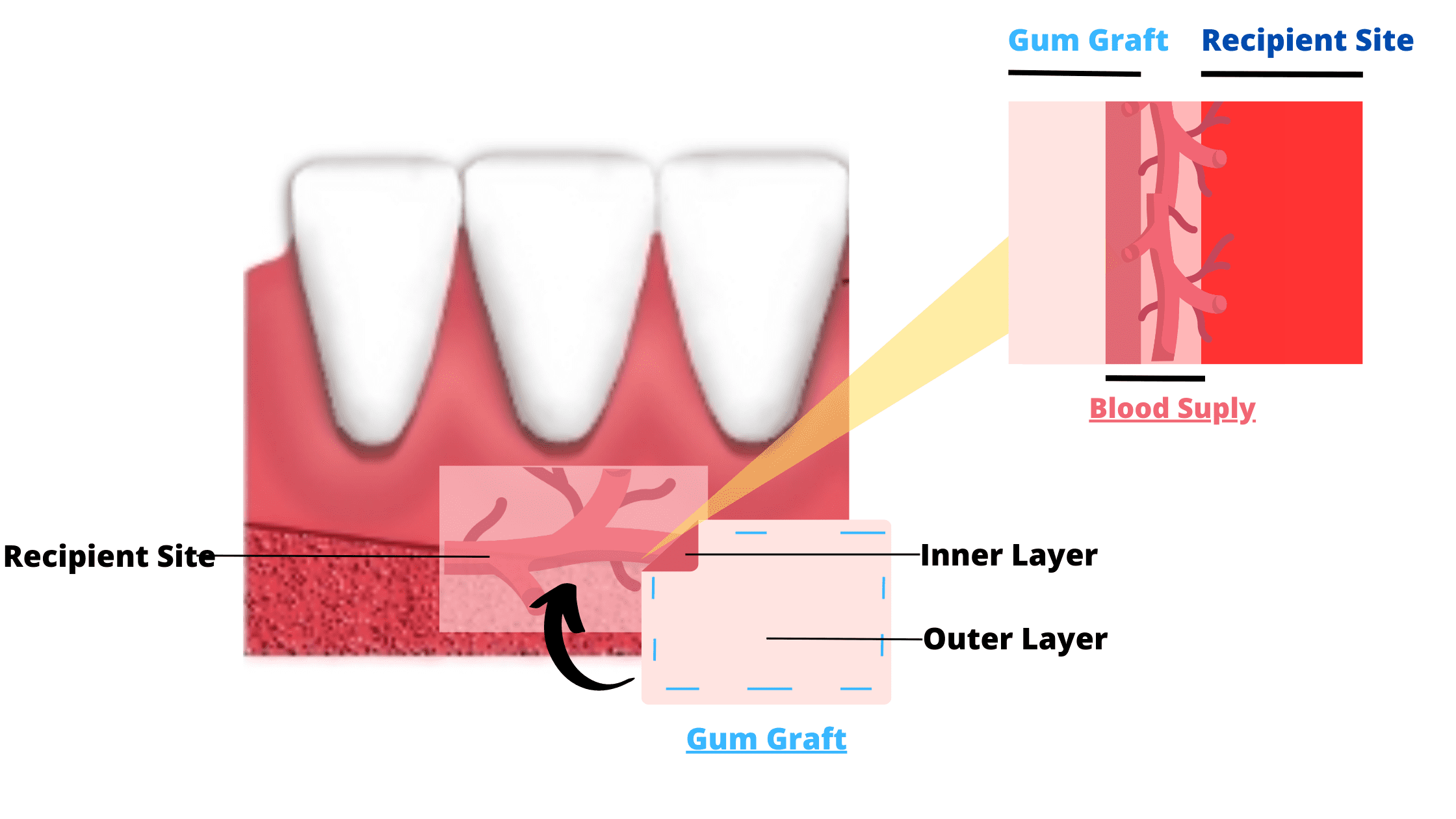
Gum graft failure means the graft did not survive during the early healing stage (also called necrosis). This happens when the full thickness of the graft (not just the outer layer) fails to properly attach.
The telltale signs include the graft becoming loose, turning completely white, and detaching from the recipient site.
The good news is that if the procedure is done well, failure is less likely. Even if it does occur, complete failure is rare—usually, some part of the graft survives and heals.
How to Tell if a Gum Graft Turning White is Failing or Healing?
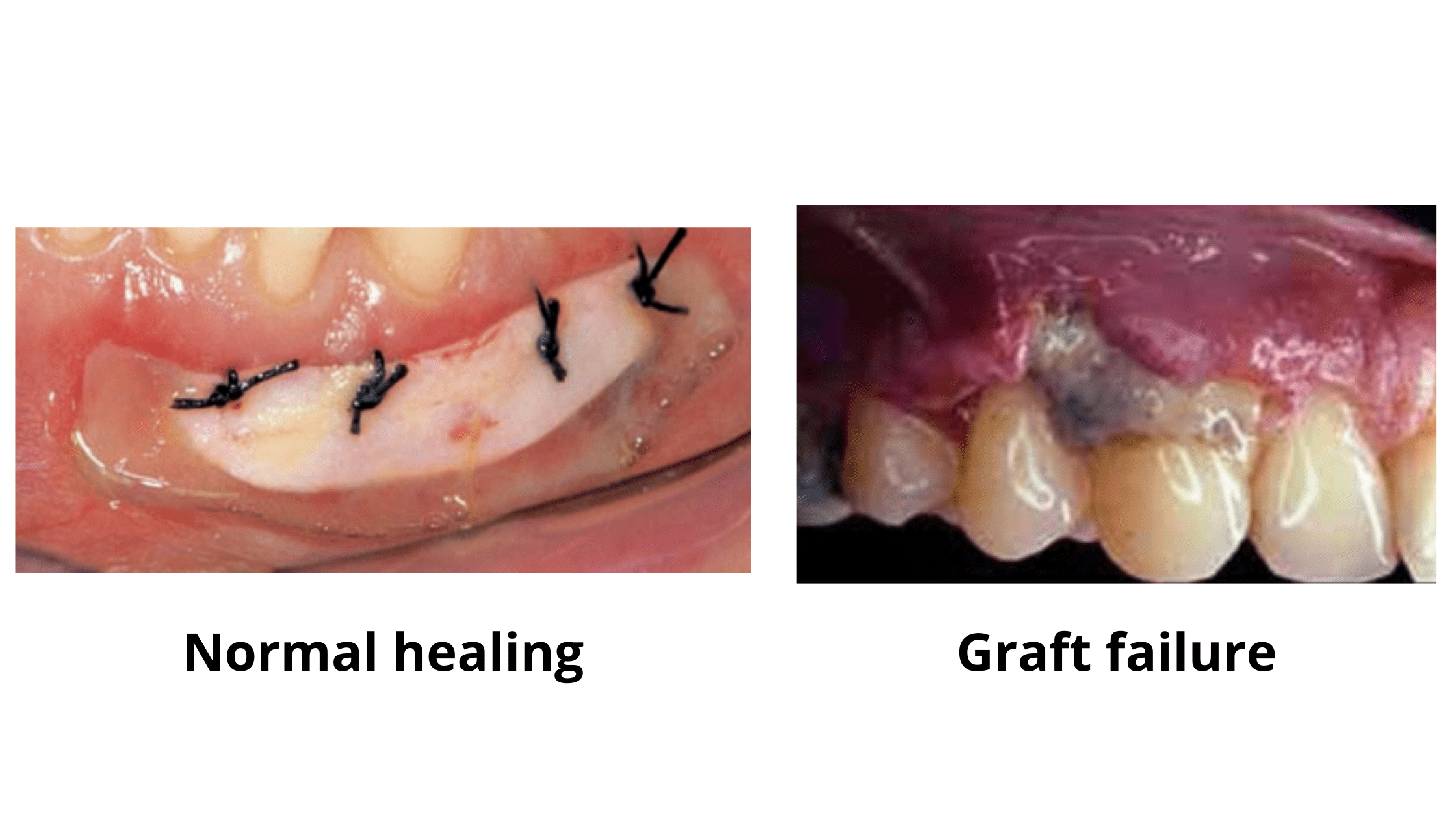
The graft needs time before you can see its final appearance.
It’s completely normal for the graft to look unusual or even unpleasant during the first 10 to 15 days. It might appear as if it’s failing, but again, it’s too early to judge!
The graft typically begins to show its definitive appearance around weeks 4 to 6 after the procedure. So be patient and give it the time it needs to properly mature.
In the meantime, avoid constantly checking or touching the surgical site. Instead, focus on following your dentist’s care instructions closely.
Here are the signs you need to watch out for:
- The graft has moved out of place: This can happen if the graft is bumped by your toothbrush, tongue, or if the stitches come loose. The first few days are critical for the graft to survive and attach. If it shifts too soon, it may not heal properly.
- The graft feels loose: If the graft feels unstable or starts to loosen—especially in the early days—contact your dentist. This could be a sign that the graft has failed to integrate properly.
- Bad breath and foul taste: Some bad breath or taste is normal after surgery. But if it lasts too long or comes with other symptoms like pus, severe pain, or worsening swelling and redness, it could be a sign of infection or failure.
Gum Graft Turning White in the First Week: The Reasons
When the graft is taken from the donor site, it's cut off from its blood vessels.Once stitched in place, its survival during the first two days depends mostly on the recipient site, which provides the nutrients needed.
The inner layer of the graft, the part that sits directly against the recipient site, receives the most supply—and is therefore the one that survives.
The outer layer, which is farthest from the nutrient source, doesn’t get enough nutrients and naturally dies off. That’s why it turns white and begins to shed as early as the second or third day.
This process is completely normal and usually continues through the first two weeks of healing.
Gum Graft is White in the Third Week: Is This Normal?
The color of your gums is influenced by several factors, including blood flow, melanin (pigmentation), keratin, and thickness.By the third week of healing, the graft’s outer layer has usually finished shedding. However, it is still in its maturation phase, and its final thickness and appearance have not yet fully developed.
So during this time, it’s normal for the color and texture of the graft to appear inconsistent or uneven.
It usually takes until the sixth week for the color, texture, and thickness to fully stabilize.
If, however, the graft feels loose or looks like it’s peeling away during the third week, that’s unusual and may be a sign of a problem. Don’t wait to contact your dentist in that case.
Gum Graft Looking White After Healing
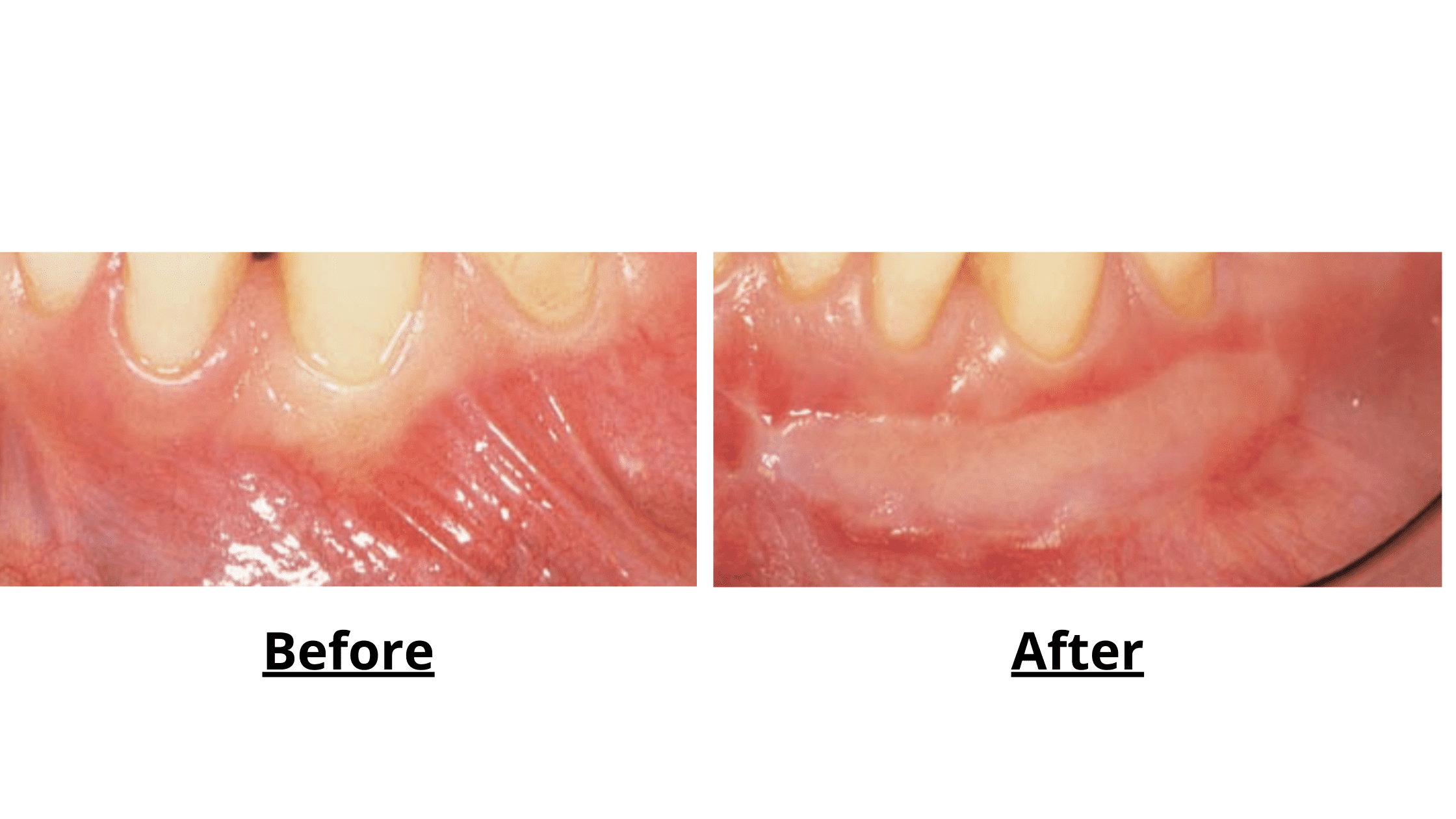
It’s common for people to notice that the graft looks paler or lighter in color after healing.
This happens because gum grafts retain the color of the donor site, which is typically the roof of the mouth (palate).
The skin of the palate is naturally lighter and more whitish than your gums. As the graft heals and matures, it may take on this whitish color. Sometimes, this can result in an uneven or less aesthetic appearance, especially in visible areas (front teeth).
What Should a Mature Gum Graft Look Like?
When a gum graft is fully healed, it should be firm, stable, and blend with the surrounding gum tissue.Here's how it should look:
- Color: A healed graft has a healthy pink color that matches the nearby gums. It should no longer appear white or discolored.
- Consistency: The grafted area should feel firm to the touch—similar to the rest of your gums.
- Texture: A mature graft will have a smooth and even surface without rough or irregular patches.
- Contour: The graft should follow the natural outline of the gum line. If there’s an uneven area or defect, it may require correction with a procedure like gingivoplasty (gum reshaping).
- Size: Some slight shrinkage after healing is normal, but the graft should remain stable in size for the long term.
Quick Overview of The Healing Stages
- First 24 hours: A blood clot forms immediately after the procedure to stop bleeding and stabilize the graft. Inflammation increases within a few hours, causing soreness, redness, and swelling around the area.
- Day 2–3: The outer layer of the graft loosens and begins to shed. Meanwhile, the inner layer starts developing new blood vessels and attaching to the recipient site.
- Day 7: The graft becomes firmly attached to the recipient site. New cells begin to grow, rebuilding the outer layer through a process called epithelialization.
- Day 14: Epithelialization is complete, and the graft looks normal. However, the inner tissue is still maturing.
- Week 6–8: Maturation finishes, and the graft is fully healed and stable.
- Color Atlas of Dental Medicine: Periodontology Book by Edith Rateitschak-Pluss and Herbert F. Wolf
- La greffe de gencive. — Conseil Dentaire Dr.Hauteville
- Histology of the oral mucosa – Histology and Embryology for Dental Hygiene (pressbooks.pub)
- A Critical Evaluation of Methods for Root Coverage (sagepub.com)
- Prévention des échecs et des complications en chirurgie muco-gingivale - AOnews le magazine dentaire qui nous rassemble (aonews-lemag.fr)